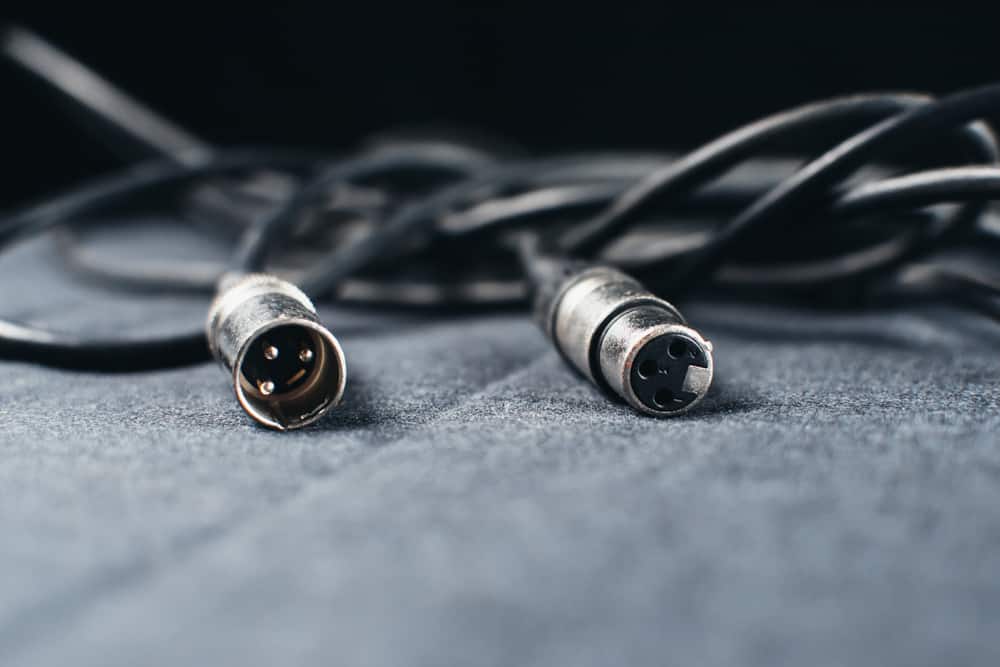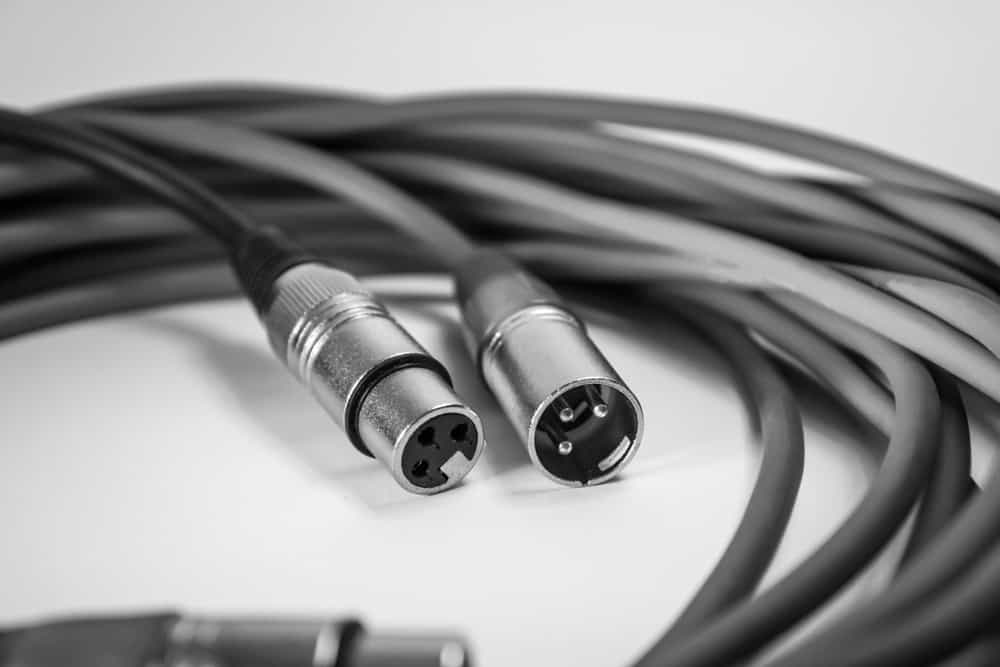
Without even thinking about it, we use XLR cables to supply phantom power to our mics and other pieces of audio equipment in a live and studio application. What happens when an XLR cable does not supply phantom power? Surely all XLR cables supply phantom power, and if they don’t, then why or which types don’t?
All standard 3 pin XLR cables that have an XLR connection point at both ends of a cable will indeed support phantom power. XLR cables with different connection points (converted cables such as XLR to 1/4 inch jack) will not supply phantom power.
This article will touch on phantom power and its various applications to the audio world, covering what many individuals actually miss. With that information, we will relate it to XLR cables and understand if they all indeed supply phantom power and if they don’t, then why and which types do.
Phantom power overview
Undoubtedly if you have ever played live or recorded in the studio, then you have used phantom power for one reason or another. That reason being that phantom power provides current typically to a condenser microphone enabling it to power on and function correctly.
Dynamic microphones do not require phantom power, such as the Shure SM57 or the Shure SM 58, so in that regard, we do not need to worry, but for recording purposes, condenser microphones are typically better and require it.
The power supplied from the mixing desk or any other piece of audio equipment to the condenser microphone is cleverly supplied with power by the wiring supported in an XLR cable that provides power to mics that need it and does not to those mics that do not require it.
Considering voltage of phantom power
The most common voltage supplied by audio equipment regarding phantom power is 48 volts. This is so common that many people think this is the only voltage that phantom power provides. However, this would be incorrect.
The ANSI Standard (IEC 61938) allows for multiple voltages of phantom power to be supported, and it ranges from 12volts to 24volts to 48volts. This means that pieces of audio equipment can have various voltages of phantom power. This goes for acoustic guitar amps, with even some preamps having phantom power voltages of 15volts.
This is not cause for concern because lower voltages will not damage your microphone if you have a mic that requires 48volts of phantom power and your equipment is pushing out a lower voltage. You may experience some problems like lower levels, loss of output, and loss of sensitivity, but you can rectify the problem very easily if you are aware of this.
This, however, is why some people think that not all XLR cables support phantom power. There may be one or two types of XLR cables that don’t support phantom power but not for the reason you think, and we will get into those types in the subsequent heading.
Considering XLR cables and lower voltage phantom power equipment
As we said, there are many different voltages of phantom power that your audio equipment can have. Due to this, you may think that your XLR cable is not supplying power to your microphone when in fact, your microphone will be rated for a specific phantom power voltage and your piece of audio equipment has a lower voltage.
There will be nothing wrong with your XLR cable, and to resolve this issue, all you will need to do is purchase a phantom power supply which is relatively inexpensive. It’s also much cheaper than buying a new piece of audio equipment like a mixing desk that supports a higher phantom power voltage.
Check out this 48volt phantom power supply on Amazon.
XLR cables and phantom power
For the most part, all XLR cables will support phantom power. This does not matter if they are expensive XLR cables that are gold and nickel-plated or reasonably priced XLR cables. There are, however, different types of XLR cables used for different situations, such as DMX cables.
However, DMX cables are used for other purposes rather than audio such as for lighting, and we do not need to cover those in this article.

What forms of XLR cables do not support phantom power
As we said, all XLR cables will support phantom power because the inner workings are designed to do so. However, you can get Cables that have an XLR connection on one end (whether it’s female or male) and then a different connection point on the other end, such as a 1/4 inch jack.
These variations (or forms) of XLR cables with an XLR connection point on one end, and any other connection point other than an XLR connection point will not support phantom power.
You have to remember that the design of an XLR cable is different from other audio cables. It is shielded with a negative ground wire and two positive signal wires. Going into details about how XLR cables work is beyond the scope of this article, but you can check out my other articles here, where I cover XLR cables in great detail, going over their quality, design, and types.
All you need to know in terms of phantom power and these forms of XLR cables is that when you have the two different connection points, the internal wiring will be different, and thus they will not be able to support phantom power.
Troubleshooting XLR cables and phantom power
If you find yourself having an issue with your XLR cable and phantom power that is supposed to be powering your condenser microphone, but it is not, then this section is for you.
Take note that the first thing you need to do is check the phantom power voltage of your audio device and make sure that it matches your microphone’s phantom power. As already discussed, this is a typical problem and one that is constantly overlooked because many individuals do not realize you can get a varying voltage of phantom power depending on your piece of audio equipment.
The next thing you should do if the problem does not lay with incorrect voltage is to swap channels and cables, ensuring that the problem does indeed lay with the cable and not a malfunctioning channel on your audio device.
Once you have confirmed it’s the cable, you will need to check for dust and faulty connection pins within the XLR connection point. Other than that, you will need to remove the connection point and either resolder them or purchase new ones and resolder those.
If this does not work, then the problem lies within the wiring of your XLR cable, and it is probably easier just to purchase a new one.
For the most part, we always recommend high-quality cables no matter what they are because the materials and how they are manufactured are of high standards meaning they will have less interference and noise and will definitely last much longer than poor quality cables.
Check out this XLR cable on Amazon.
Conclusion
We discovered that phantom power does indeed run through all XLR cables except ones that are wired to have a different connection point on one end. These types of XLR cables are not wired the same way as traditional XLR cables and will not supply phantom power.
Moreover, many people don’t realize that there are different voltages when it comes to phantom power. They will connect up their microphone with an XLR cable to their piece of audio equipment and then turn on the phantom power, but the mic will be outputting a low volume, or it will be causing some issues. This is probably because your piece of audio equipment has a different phantom power voltage than what your mic requires.
Be sure always to check this first, followed by our troubleshooting tutorial to check your XLR cables. When in doubt, always check your audio equipment through a process of elimination to determine what could be at fault before attempting to buy anything, especially with regards to cables and expensive audio equipment.
Read this article to find out how far you can run XLR cables without any performance problems.
Source list
Does Phantom Power Work on 1/4″ Cable?


